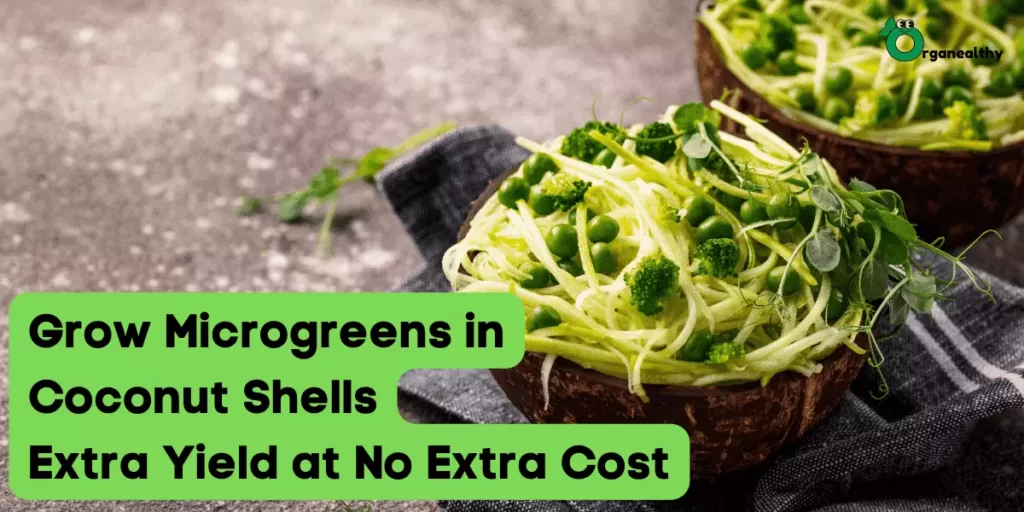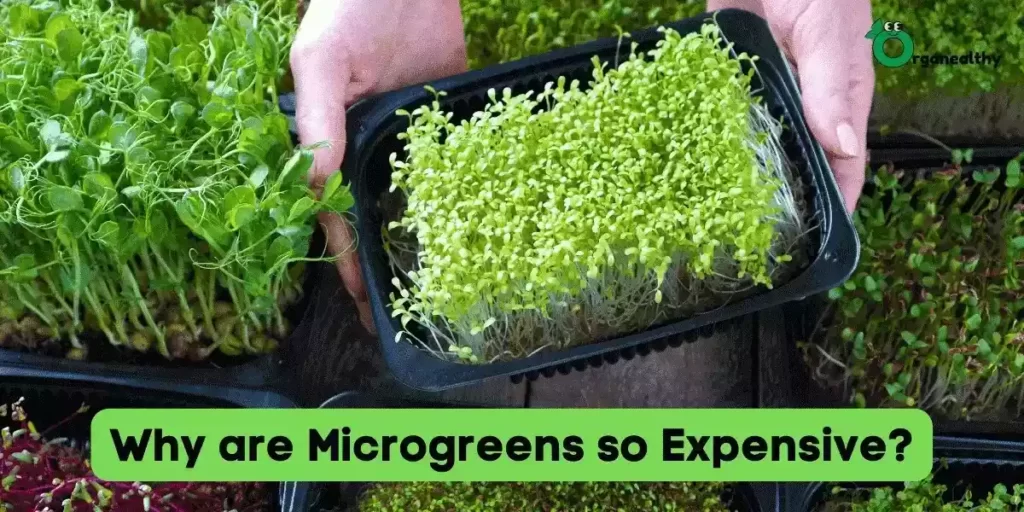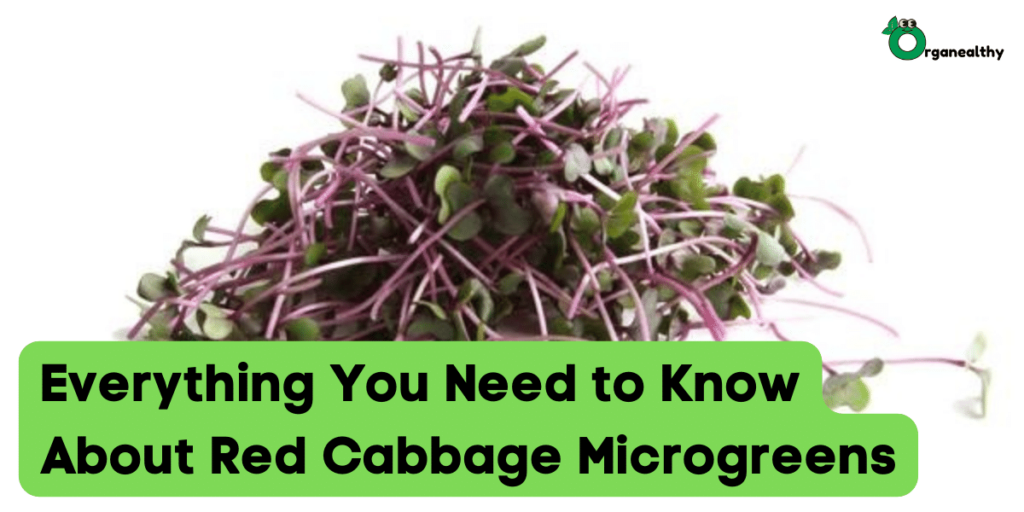Sunflower microgreens are highly nutritious, offering a wealth of vitamins, minerals, and antioxidants. They typically take 7-14 days to grow from seed to harvest and can be eaten raw in salads, sandwiches, smoothies, or used as a garnish for various dishes.
However, sunflower seeds are larger when compared to other microgreens, and a lot of gardeners complain about mold growth and seed hulls when growing sunflower microgreens.
Also, many growers have questions about the growing process, what medium to use, whether to use hydrogen peroxide + water solution for maximum growth, and much more. In this complete sunflower microgreens guide, you get all the answers.😁
I will share tips and tricks to help you grow sunflower microgreens easily. I will also share some of its nutritional properties and health benefits that will encourage you to add them to your daily meals.
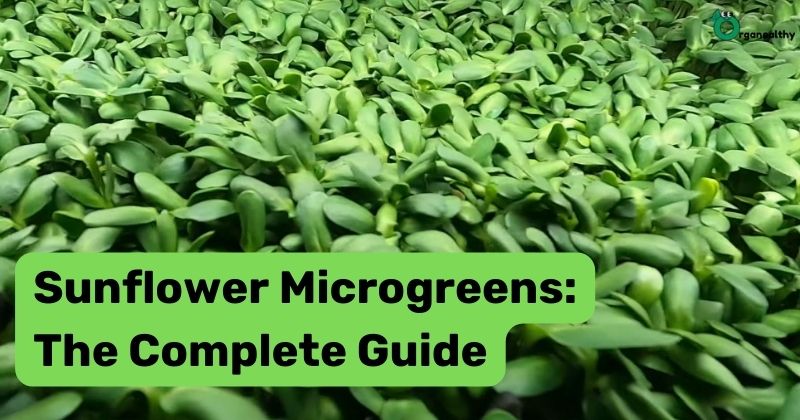
Essentials for Sunflower Microgreens
Before I tell you how to grow sunflower microgreens, let me tell you the essential equipment you’ll need to get the best yield out of your sunflower seeds.
| Item | My Recommendation |
|---|---|
| Seeds | Black Oil Microgreens Seeds |
| Growing Trays | 10inX20in Plant Growing Trays |
| Soil Mix | OMRI Potting Soil Mix |
| Water Hose Nozzle (optional) | RESTMO Garden Hose Nozzle |
| Scissor or Knife (optional) | Cuisinart Electric Knife |
| Ziploc Bags (optional) | Ziploc bags for storing microgreens |
Sunflower Microgreens Seeds
Many gardeners complain about mold growth when growing sunflower microgreens, and most of the time, it is either of two reasons: over-watering the trays or the bad quality of seeds.
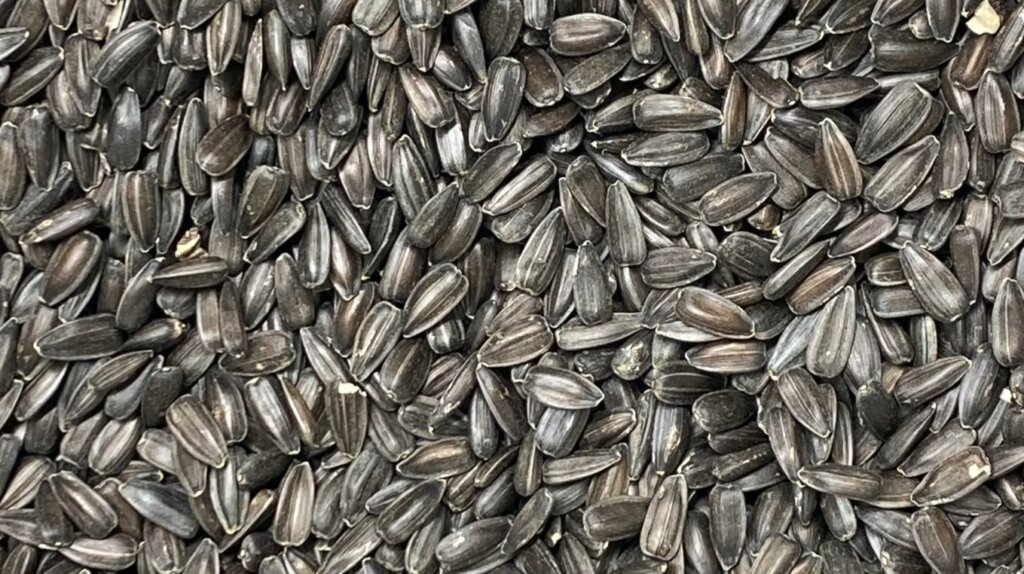
In my opinion, the best place to buy sunflower microgreen seeds is True Leaf Market. They provide high-quality non-GMO seeds that yield a healthy batch of microgreens.
True Leaf Market provides two varieties of sunflower microgreen seeds – the most popular Black Oil Sunflower Seeds and a little more colorful Red Storm Microgreens Seeds.
The sunflower microgreen seeds are available in two sizes – large and small. Whether you buy the large seeds or the small seeds, you get the same seed quality. However, you get more quantity of seeds if you buy the small ones.
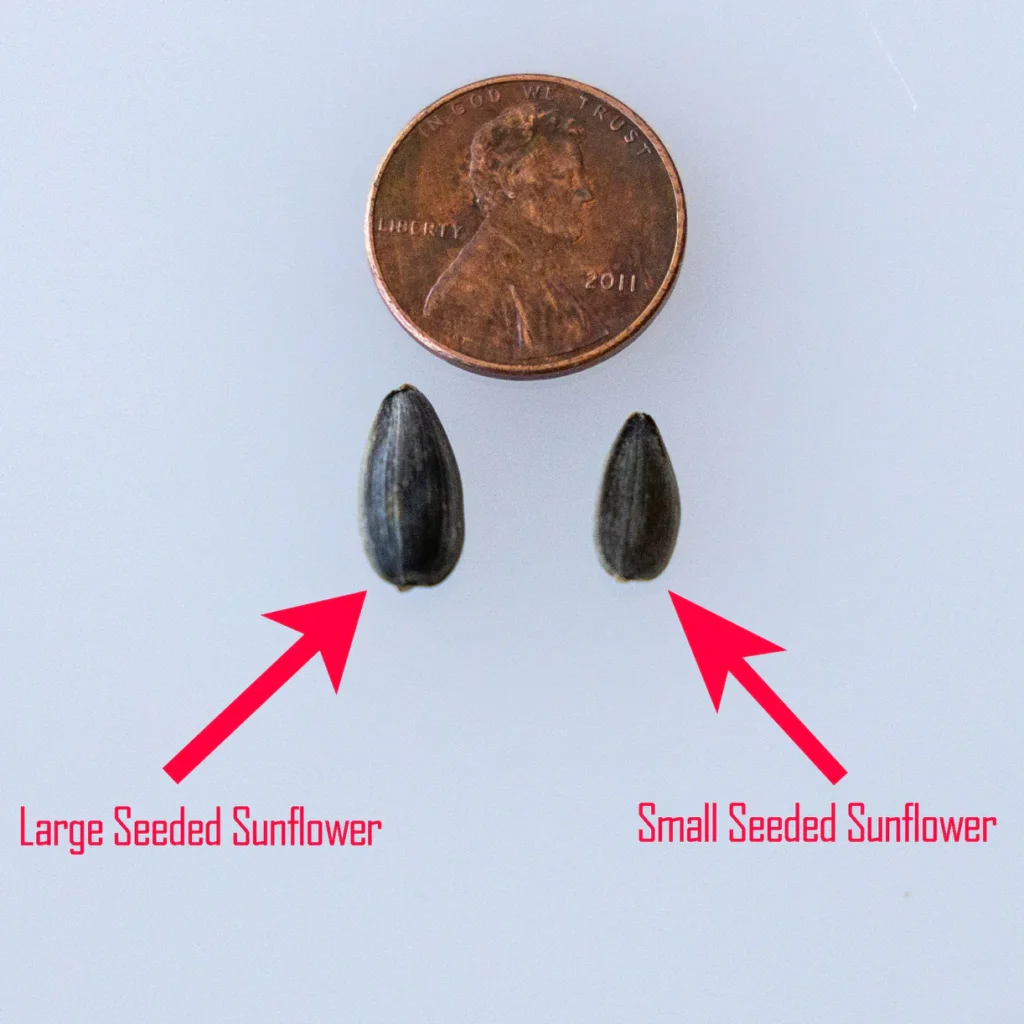
Growing Trays [10inX20in or 5inX5in]
You need at least 3 growing trays of the same size to grow buckwheat microgrens.
One growing tray with drainage holes to plant the seeds, one that will go under the growing tray and collect the excess water, and a third tray to cover the microgreens in the blackout period.

Preferably, the growing trays must be of the same size. You can buy a set of growing trays from True Leaf Market or Amazon – your choice.
🔔 Read my guide about the best soils for microgreens.
Soil Mix
You can grow microgreens without soil, but I recommend you go with a soil mix as your growing medium. Soil has nutritional properties that assist in plant growth.
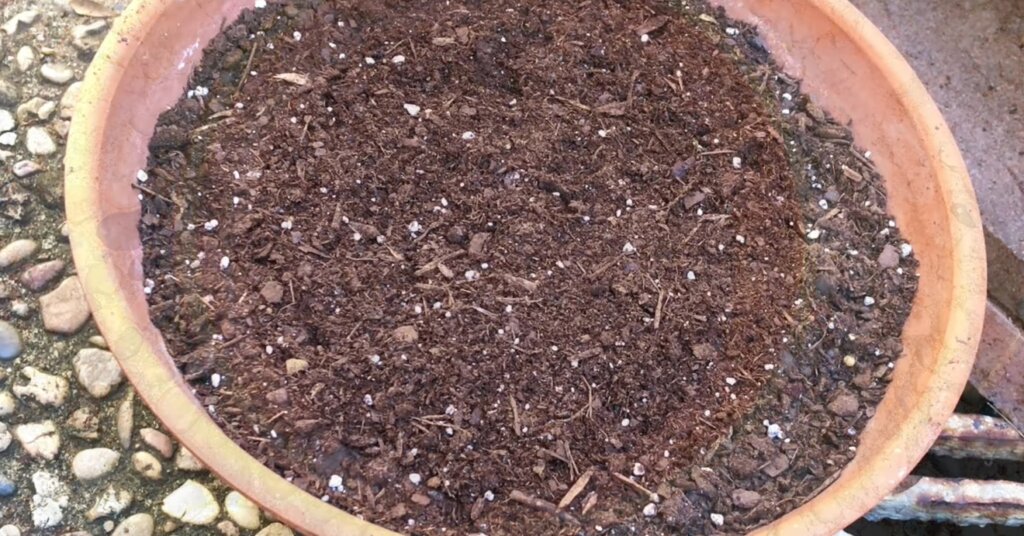
An OMRI-certified potting soil mix is a great starting point. You can buy as much soil as you also want if you want to try growing other varieties of microgreens, like, radish or broccoli.
Miscellaneous Items
You can use a pouring jar to water your microgreens. However, there’s a risk of overwatering a part when pouring water from a jar. That’s why I suggest you get a spray bottle or a water hose nozzle with adjustable settings.
Apart from the watering equipment, you need scissors or a sharp knife to harvest the sunflower microgreens. You can use a kitchen knife or a pair of scissors you have at home – just sterilize it before using it on your microgreens.
You also need some Ziploc bags or air-tight containers to store your sunflower microgreens after harvesting.
How to Grow Sunflower Microgreens in Soil?
Sunflower microgreens seeds are comparatively larger than other popular microgreens like radish or broccoli. So, it’s best to grow them in soil.
Also, many gardeners complain about sunflower microgreens falling down, inconsistent growth, mold infestation, and the right harvesting time – I will share all the tips and tricks I know to help you counter all these issues.
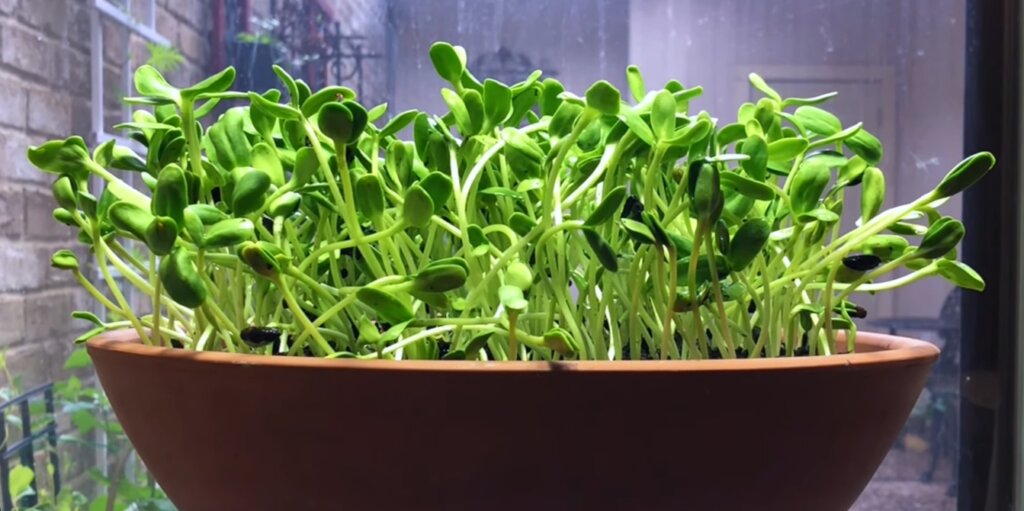
Regarding lighting conditions, LED grow lights are considered the best lights for microgreens. So, if you have the budget, go ahead and buy one. They are affordable and help you get a healthy and consistent yield from your microgreens.
If you wish to grow microgreens under natural sunlight, then keep the trays near your window sill and keep rotating them every day so that all the sides get sunlight and can grow evenly.
Now, let’s see the step-by-step process for growing sunflower microgreens in soil.
Soak the Seeds for 8 to 10 Hours
After you have selected untreated, non-GMO, high-quality sunflower microgreen seeds, soak the sunflower seeds in water for 8-10 hours. This process helps kickstart the germination process and ensures more uniform growth.

🔔 If you are using larger sunflower seeds, 250gms is enough, for smaller sunflower seeds, 150gms of seeds are enough for a 10inX20in growing tray.
Add 1 teaspoon of 3% Hydrogen Peroxide to the Soaking Seeds
Most microgreen growers complain about mold growth when growing sunflower microgreens, especially novice growers. Since sunflower microgreens need a lot of water, mold growth can be caused by to over-supply of water.
Or, it could be because of the improper cleaning of the seeds before sowing them in the growing trays.
I recommend creating a mix of hydrogen peroxide (3%) and water and adding it to the seeds when you’re soaking them. So, you need to soak your sunflower seeds in water and the aforementioned mix.
🔔 Mix 1 teaspoon of food-grade hydrogen peroxide (3%) to your soaking seeds.
You can go for any hydrogen peroxide that’s available in your nearby stores, just make sure it’s food-grade and a 3% solution, not more than that. If you want to order it online, EssentialOxygen’s hydrogen peroxide solution is a great choice.
Store Soaking Seeds in a Refrigerator
Mold loves to thrive in a warm environment, even at room temperature, so I recommend you store your soaking sunflower seeds in a cold environment i.e. a refrigerator.

Prepare the Growing Tray
Use a shallow tray or container with drainage holes. Fill it with coco coir or any organic potting soil mix you use. Ensure the medium is evenly spread and slightly compacted.

Once all the soil is evenly spread across the tray, water the soil gently to make it moist. Also, I recommend growing in a tray with drainage holes. This way, you can bottom-water the sunflower microgreens very easily.
You can do this the night before sowing or 30 minutes before sowing the seeds, I recommend the latter.
Rinse & Sow the Sunflower Seeds Evenly
After soaking your sunflower seeds in 1 teaspoon hydrogen peroxide (3%) and water for 8 to 10 hours, remove the water and rinse them thoroughly under tap water. Rinse the seeds multiple times to get a clean batch of sunflower seeds.
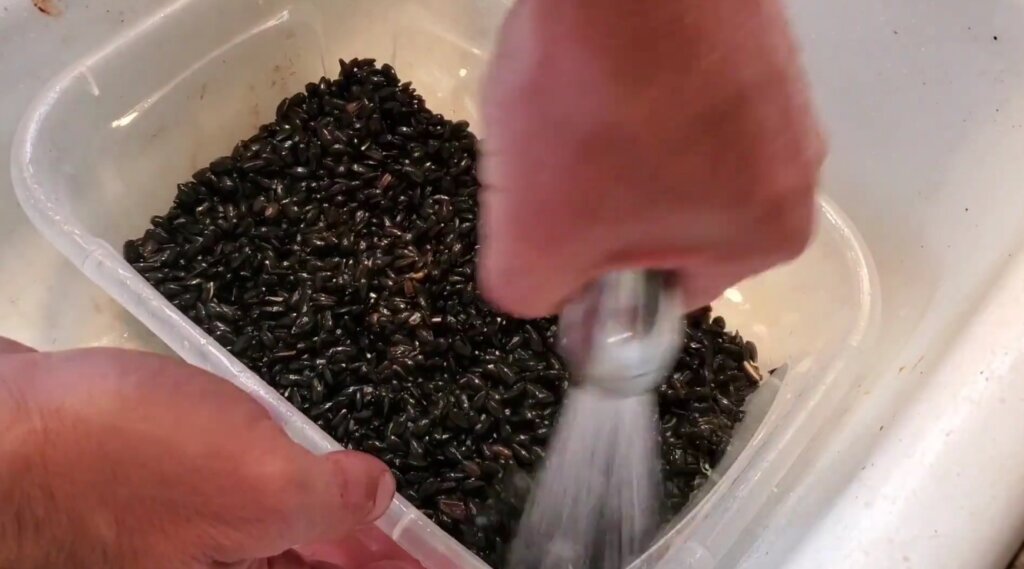
Once the seeds are rinsed, spread them evenly on the growing tray and ensure that all the seeds are touching the soil. Mist the growing tray one more time before you put the seeds away for germination.
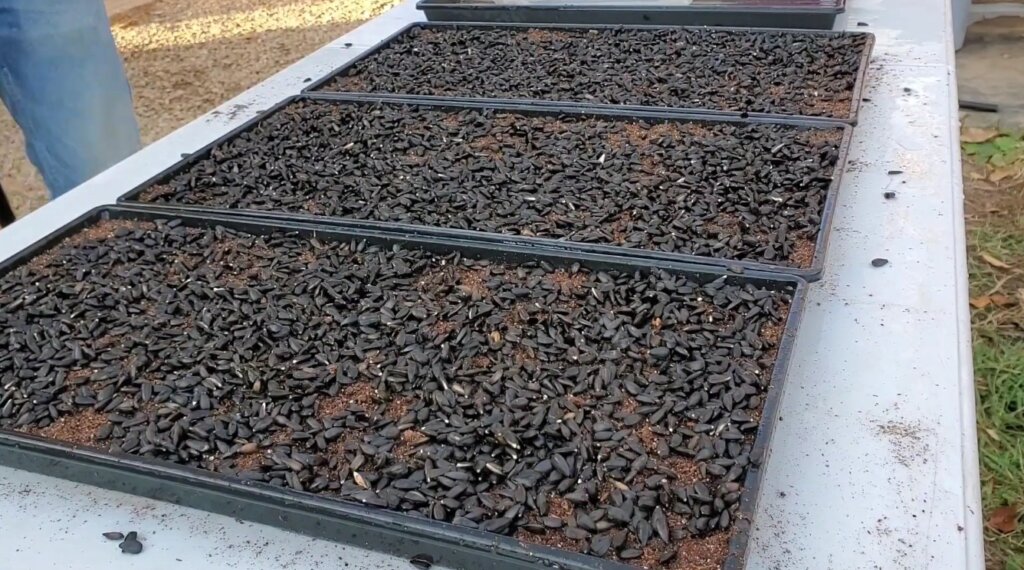
You can even create a mix of 2 tablespoons of hydrogen peroxide (3%) and 1000ml of water to spray over the seeds and microgreens. Before shelving the trays for germination, gently spray the aforementioned mix over the seeds.
Germination & Blackout [5-7 Days]
After adding the seeds to the growing tray, cover the tray with another tray, preferably with no holes, and keep a weight over it to push the seeds down into the soil.

Covering the seeds will create a humid environment, aiding germination. Sunflower microgreens don’t require continuous blackout but benefit from it during germination.
On the fourth or fifth day (in some cases, even on the sixth) you will start seeing some germination from the seeds.

On day 5, if you are seeing good enough germination, you can move the seeds under blackout. Remove the weight and flip the upper tray to cover the growing tray. Then keep the growing tray in a dark place. Do this for 1 to 2 days.
Put Them Under Lights & Water Every Day
After the blackout period, you will start to see good growth in your trays. The seed hulls will start to come off. This is when you put your microgreens under light, LED lights work the best for microgreens. Do not cover them.
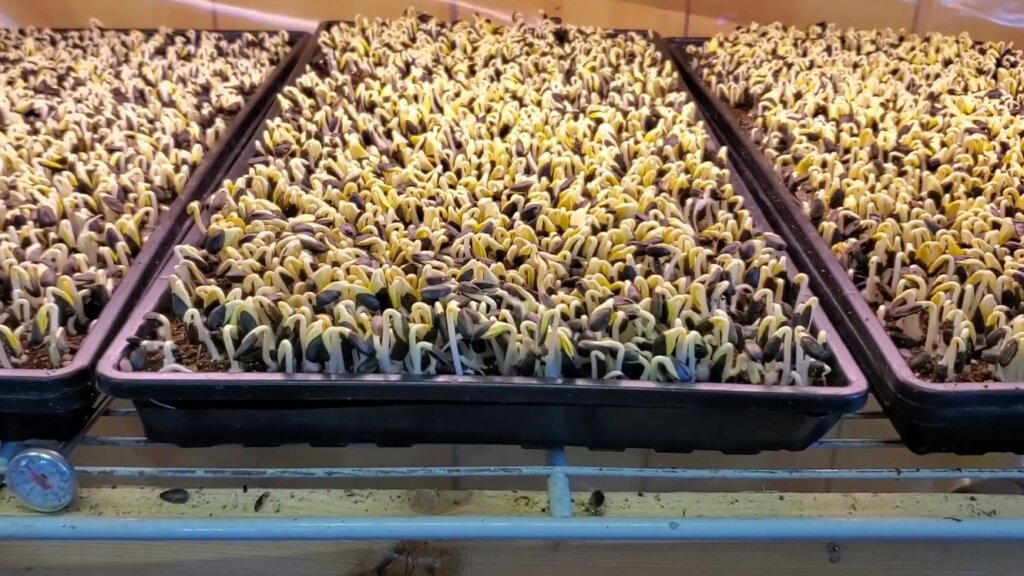
On day 8, start watering your sunflower microgreens. I recommend you bottom-water it. This way, the roots can absorb an optimum amount of water and you won’t create a puddle around your seeds.
Bottom-water your sunflower microgreens every day. Since sunflower microgreens need a lot of water, add 2 cups of water every day.
You can even spray the growing tray with some of your hydrogen peroxide (3%) and water every day after bottom-watering to avoid any mold growth.
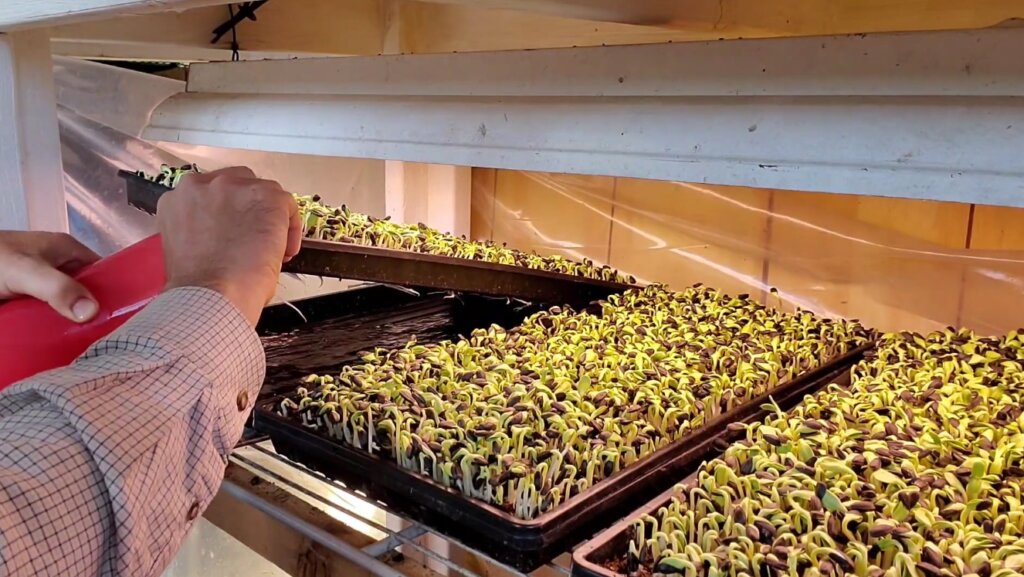
You can even use a mix of water and Ocean Magic Sea Minerals to add more nutrients to your microgreens and get a better yield.
Harvesting Time [Day 10]
On day 10, your sunflower microgreens are ready to harvest. Pull them away from the growing lights and get your scissors or knife ready. If you still see a lot of seed shells, gently rub your hands over the microgreens to brush off the seed shells.

I recommend you harvest the sunflower microgreens before the true leaves (see below) start sprouting out. Even if they have just sprouted out a little bit, it’s a sign to harvest your microgreens.

If you let the true leaves grow out, it will make the sunflower microgreens bitter and it just doesn’t taste good. Use a sharp knife or scissors to harvest your sunflower microgreens.

Store in Air-Tight Containers
The best way to store microgreens (and retain their freshness for a long time) is to keep them in the refrigerator in an air-tight container or a Ziploc bag. Your microgreens should be dry before storing.
If stored this way, the microgreens will stay healthy, crunchy, and colorful for at least a week.
Do not wash your microgreens if you do not want to eat them right away. If you store wet microgreens, they will go mushy and rot. So, store your microgreens dry and wash them only when you’re about to eat them.
🔔 Check out my complete guide on how to store microgreens the right way to keep them fresh for a long time!
Do Sunflower Microgreens Regrow?
No, sunflower microgreens do not regrow. The best thing you can do after harvesting the first batch is composting the soil and the roots. There are only a few microgreens that regrow after harvesting like green peas, kale, fava beans, speckled peas, and even snow pears.

I also suggest not reusing the soil but dumping it into vermicompost and letting the worms have the organic matter.
There are remnants of harvested microgreens – the roots, the leaves, etc. – in the soil, which can contaminate your next batch of microgreens. Reused soil can also affect the microgreens’ color, taste, and even their growth.
How do Sunflower Microgreens Taste Like?
Sunflower microgreens are characterized by a mild, nutty flavor profile and a fresh, crunchy texture. With their subtle, earthy sweetness, they are versatile and pair well with both savory and sweet dishes.
Harvested at around 1-2 inches in height, these microgreens add a delightful element to salads, sandwiches, wraps, and more, enhancing the overall culinary experience.
How to Eat Sunflower Microgreens?
Just knowing how to grow sunflower microgreens isn’t enough. You should be able to eat them in all the different manners as well, so here we are!
You can easily eat the sunflower microgreens in the same way you would eat baby lettuce, arugula, or alfalfa sprouts. Both the leaves and stems are edible and absolutely delicious.

You can eat sunflower microgreens either raw or cooked. If you’re cooking them, add them to the plate after you take them off the heat so that they retain most of their crunch and crispy grain.
They complement a wide variety of dishes including stews, salads, omelets, and scrambled eggs, as well as sandwiches and wraps.
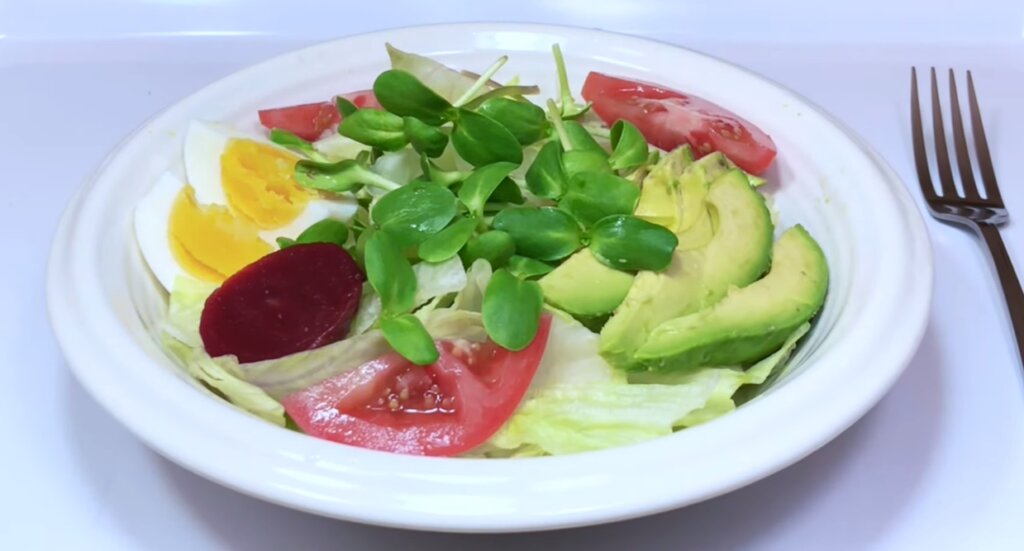
Adding sunflower microgreens to your smoothie or juice is an incredible way to put in some additional nutrition, as well as a bit of nutty flavor. They even go great combined with mashed potatoes or rice.
Sunflower Microgreens Nutrition & Health Benefits
Nutritional Values
- Rich in vitamins A, C, and E.
- High in essential minerals such as potassium and iron.
- Abundant in antioxidants, including flavonoids and carotenoids.
- Good source of dietary fiber.
- Contains healthy fats, including omega-3 and omega-6 fatty acids.
Health Benefits
- Supports immune function and vision (vitamin A).
- Aids in collagen formation and antioxidant defense (vitamin C).
- Promotes heart health and regulates blood pressure (potassium).
- Facilitates oxygen transport in the blood (iron).
- Contributes to overall antioxidant and anti-inflammatory protection.
- Supports digestive health and regular bowel movements (fiber).
- Provides essential nutrients for muscle repair and growth (protein).
- Offers a nutrient-dense addition to a well-balanced diet.
Conclusion
Now that you know how to grow sunflower microgreens what are you waiting for? Go ahead and start planting your batch of these delicious microgreens.
Mix and match your sunflower microgreens with different dishes and find out the best combinations out there yourself!



